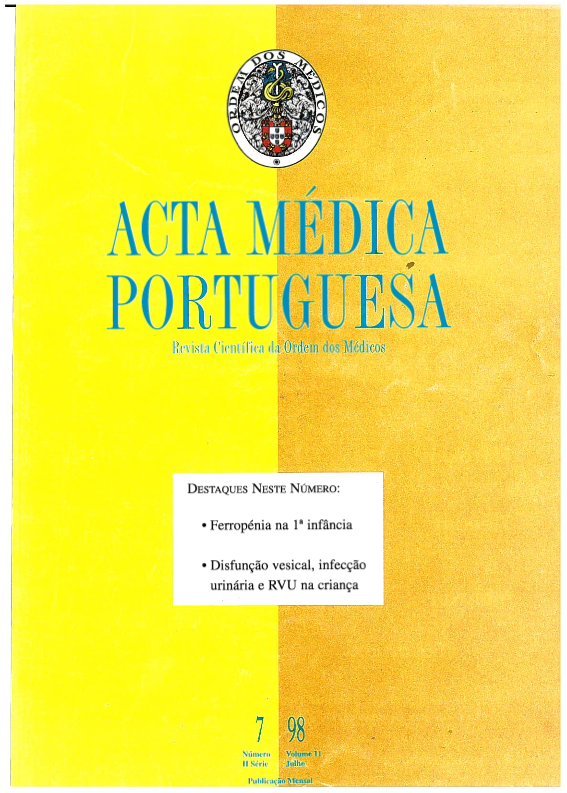Prevalência da ferropénia na primeira infância.
DOI:
https://doi.org/10.20344/amp.2310Resumo
In order to determine the prevalence of iron deficiency among 6-to-24 month-old children in the Cascais county, a cross-sectional study with systematic opportunist sampling of all 6-to-24-month-old children seen for routine immunization or well-child health care at the Public Health Centers in the Cascais county, during the Spring of 1994. All children were submitted to a short nutritional and clinical inquiry. Blood samples to evaluate anemia and iron deficiency were obtained from eligible children after parental consent. Of the 183 children who visited the health centers during the enrollment period, 125 were eligible for blood sampling. Adequate blood samples were obtained from 120; 38 (31.7%) fulfilled the eligibility criteria for the therapeutical trial (polymaltose-ferric hydroxide, 5 mg/kg/day, for 4 weeks). Twenty-six completed the trial and 13 (50%) had a positive response. The prevalence of iron deficiency estimated for this population sample was 15.8% (CI95% = 8.8-22.3), twice the prevalence of iron deficient anemia, presenting only as mild anemia. Nevertheless, for a total population of 3,500 6-24 month old children in the Cascais area, a 15% prevalence means over 500 iron-deficient children (estimated range between 300 and 800) of which 250 are likely to suffer anemia (150-400) and may be at risk of developing a permanent intellectual deficit. The size of the problem as sampled in the Cascais area does not justify recommending the screening of all young children; instead it points to the need to pay special attention to nutritional education in well-child health care visits, and to allow the early detection and treatment of infants with iron deficiency or at risk of becoming iron deficient.Downloads
Downloads
Como Citar
Edição
Secção
Licença
Todos os artigos publicados na AMP são de acesso aberto e cumprem os requisitos das agências de financiamento ou instituições académicas. Relativamente à utilização por terceiros a AMP rege-se pelos termos da licença Creative Commons ‘Atribuição – Uso Não-Comercial – (CC-BY-NC)’.
É da responsabilidade do autor obter permissão para reproduzir figuras, tabelas, etc., de outras publicações. Após a aceitação de um artigo, os autores serão convidados a preencher uma “Declaração de Responsabilidade Autoral e Partilha de Direitos de Autor “(http://www.actamedicaportuguesa.com/info/AMP-NormasPublicacao.pdf) e a “Declaração de Potenciais Conflitos de Interesse” (http://www.icmje.org/conflicts-of-interest) do ICMJE. Será enviado um e-mail ao autor correspondente, confirmando a receção do manuscrito.
Após a publicação, os autores ficam autorizados a disponibilizar os seus artigos em repositórios das suas instituições de origem, desde que mencionem sempre onde foram publicados e de acordo com a licença Creative Commons









